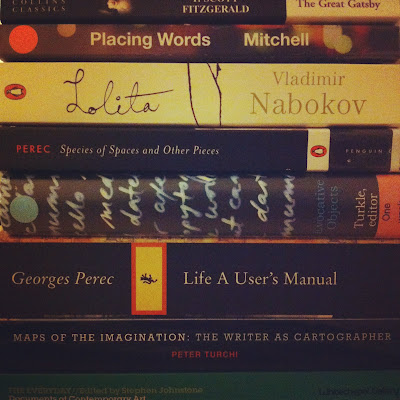I have been thinking a lot about which materials and methods I want to use to create pieces, and after the quilting workshop ( which I rather enjoyed!) I have decided that I do love to sew, and have looked at a few interesting textile artists who try to challenge the notion and connotations of EMBROIDERY IN FINE ART
ElAINE REICHEK
A conceptual artists who uses embroidery to explore aesthetics in art. Originally trained as a painter, she works towards searching for a dialogue which links her work with the history of art, with insightful commentary on how meaning is portrayedm communicated and transmitted by way of visual imagery.
In one particular piece A Lexicon of Clouds, she looks at cloud formations of some of the great paintings by El Greco, Turner and Gerhard Richter and isolates 'overlooked indications of atmosphere' such as light, and creates new studies of them in stitch. This TRANSLATION is a key theme to her practice, where the action of embroidery sets up a dialogue between modes of creativity and the values assigned to them.
I think the idea of VALUE that is assigned to a particular practice is something that hits home with me, as I am constantly thinking about how valued embroidery and such work with fabric is assigned to it within the art world...
LOU CABEEN
Lou Cabeen has turned to embroidery 'for its social connotations- connotations of gender, of the decorative, of the domestic, private life.'
In particular, in Maps of Consciousness her use of stitch is to mediate the space between what is known and recorded in the outside world and inner states of consciousness. She comments on how the stitched line 'bespeaks time, it is an actual line a manifestation of effort and choice' as it would be to choose paint, plaster etc...
ROBERT RYMAN
Not an embroiderer, but a conceptual artist from the minimalist period, whose ideas I find quite interesting. He did not like to describe himself as a 'picture-painter' but as an artist who works with real light and space and experiments with different materials such as linen, fibreglass, gouache and enamel.
BLANK...
Not trying to decorate; decoration is often associated with embroidery,
I always remember a quote from Louise Bourgeois about stitching, which always reassures and comforts me about my use of embroidery; 'The sewings is my attempt to keep things together and make things whole'. Probably not so comforting...But if sewing is good enough for Louise its good enough for me.








+001.jpg)







